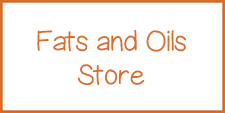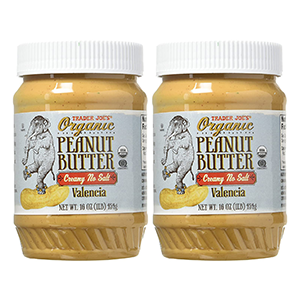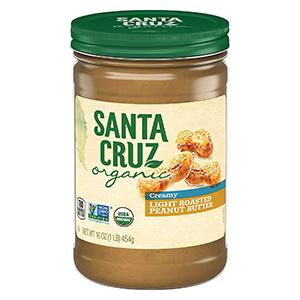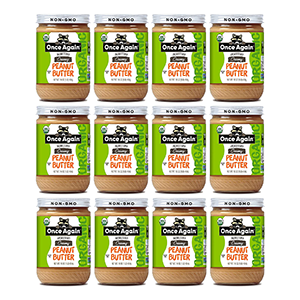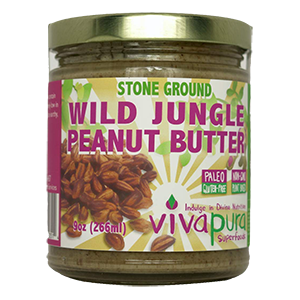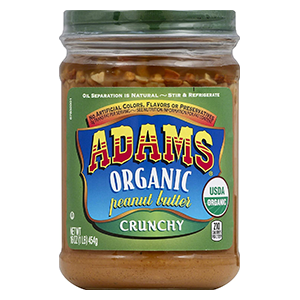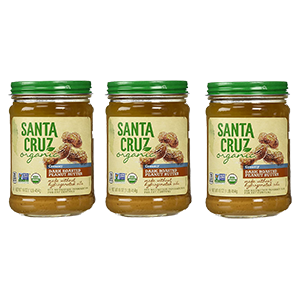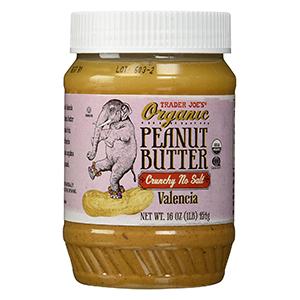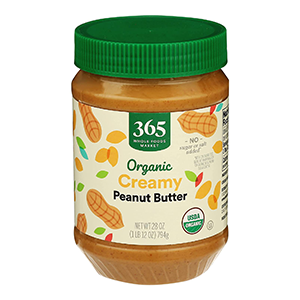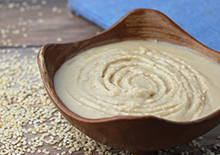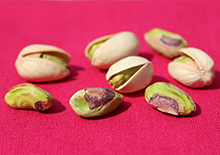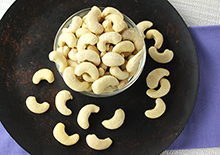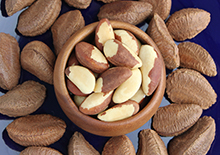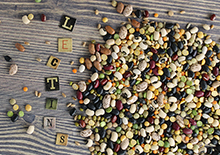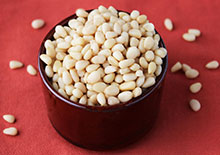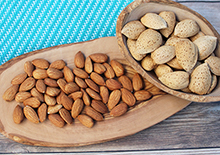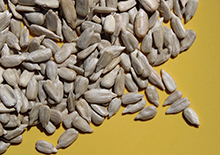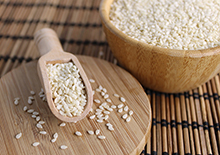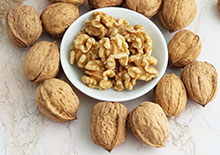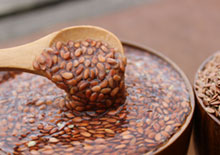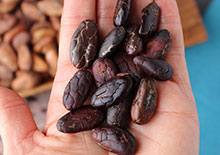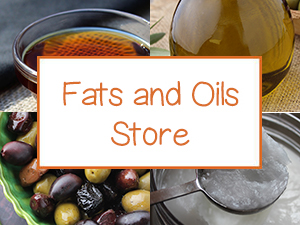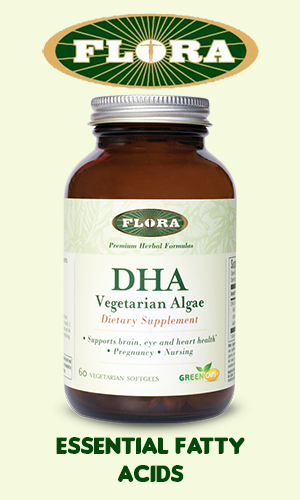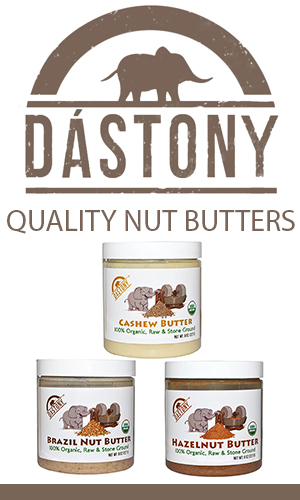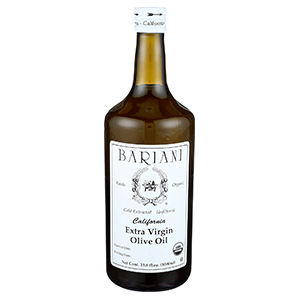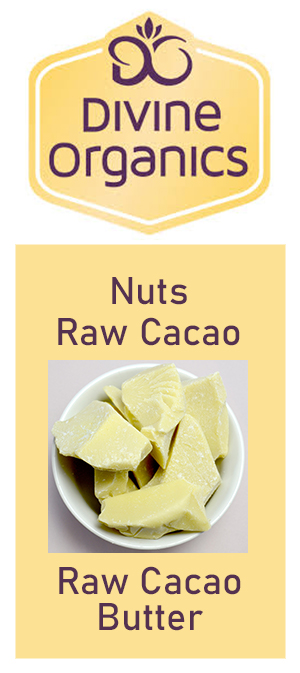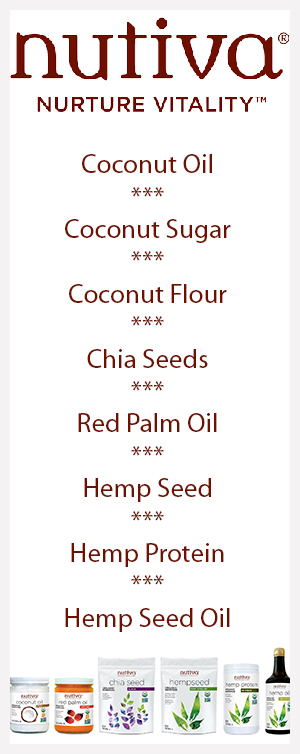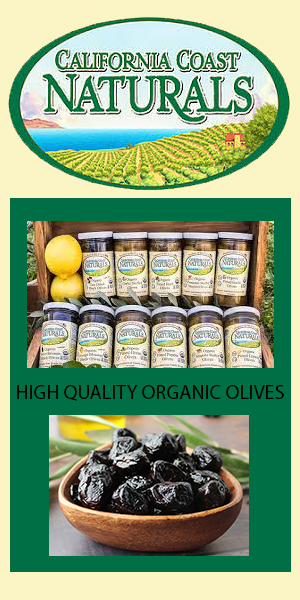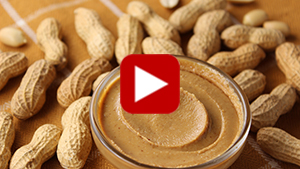- Home
- Nuts and Seeds
- Peanut Butter Nutrition Facts
Peanut Butter Nutrition Facts, Pros and Cons
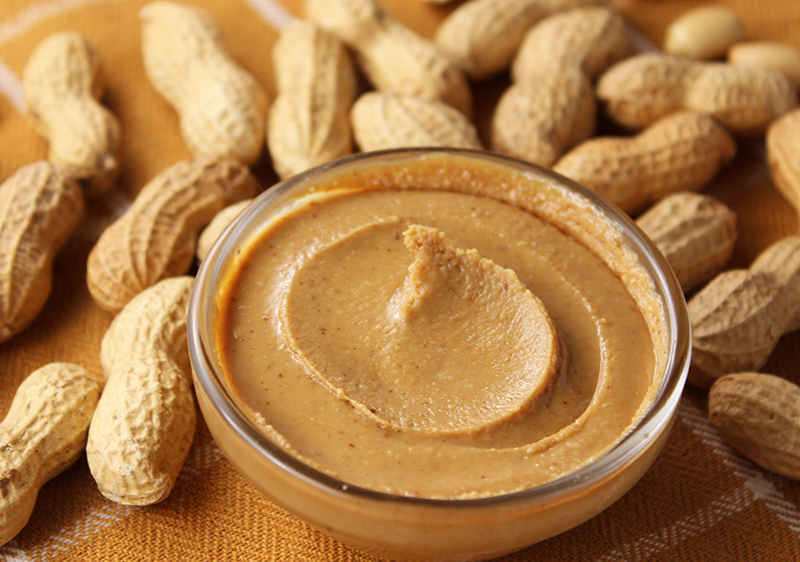
Peanut butter is a spreadable paste made from grinding dry-roasted peanuts. Peanuts come from the species Arachis hypogaea, also called "groundnut" because the nut-like legume pods grow underground.
The domesticated peanut we are familiar with today once came from tropical and subtropical regions of South America where many related species were first developed by ancient civilizations.
Table of Contents
Intro | The 3 Pros of Peanut Butter | The 4 Cons of Peanut Butter | Precautions | Shop
Today, peanut variations are cultivated all over the world and in the Southern United States, they have a long history spanning over two centuries.
It was agricultural scientist George Washington Carver who played a large role in introducing and promoting peanuts as a staple food source in American diets.
However, there is a bit of mystery surrounding the invention of peanut butter itself. Dr. John Harvey Kellogg is often credited for some of the first peanut butter innovations occurring in the 1880s.
In 1904, peanut butter was first introduced on a large scale at the St. Louis World’s Fair and soon after the peanut butter and jelly sandwich became an American tradition.
Here we'll discuss some of the health benefits of peanut butter as well as some of the less advantageous aspects of this common condiment spread.
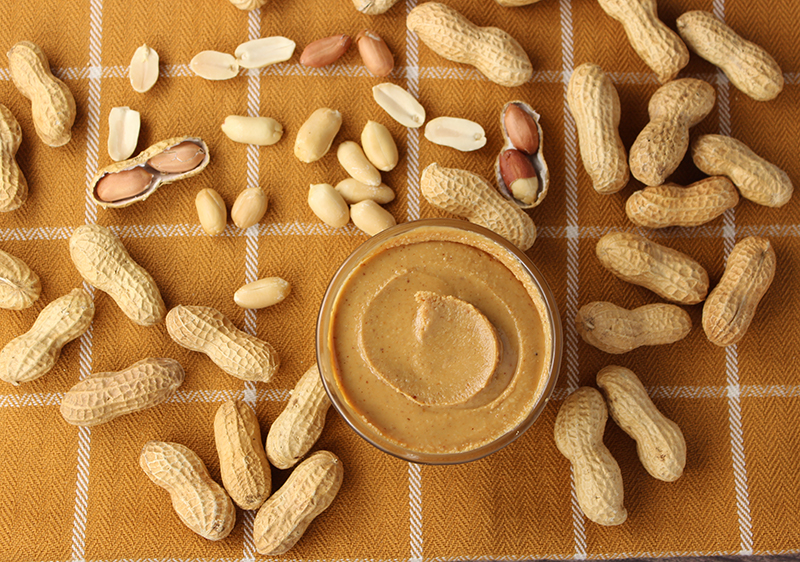
The 3 Pros of Peanut Butter
1) Peanut Butter is High in Protein
2) Eating Peanut Butter on a Keto Diet
3) Other Peanut Butter Nutrition Facts
1) Peanut Butter is High in Protein
While hemp seeds are the highest in protein out of all the nuts and seeds, peanuts are also considered a good source.
When ground as a paste, this amount becomes even more concentrated and
slightly more digestible than peanuts that require a decent amount of
chewing. A two tablespoon serving size can average about 8g of protein or 16% the Daily Value, based on a 2,000 calorie adult diet. (*)
Peanuts are technically not a nut but a type of legume and are actually top on the list up there with other high-protein legumes like soybean and peas.
Likewise, peanuts contain all essential amino acids and are an ample source of the amino acid ARGININE.
Throughout early American history, peanuts and peanut butter have been used as a nutritionally fortifying protein ever since commercial peanut production began in the late 1800s. They were often found on army ration lists of U.S. soldiers and later utilized to make the classic "peanut butter and jelly" sandwich.
Peanut butter was also a favored alternative in the early 1900s during times of meat rationing and the first government-promoted "meatless Mondays".
Interestingly, a recipe using a meat grinder to make peanut butter as a sandwich spread was recommended in the May 1896 edition of Good Housekeeping Magazine. (Source)
Peanut butter is still today viewed as a healthy plant-based food to include in the average diet to provide daily amino acid requirements.
2) Eating Peanut Butter on a Keto Diet
Peanuts are also quite high in fat content and are considered an oil crop because they're often grown as a source of peanut oil. This is evident when you open a jar of peanut butter made with 100% peanuts as some of the oil will usually separate to the top of the jar.
So, is it keto-friendly? Most plain peanut butter is roughly twice as much fat to protein content which can be a good ratio for most keto protocols.
Likewise, peanut butter that doesn't include other ingredients, like sugar, is considered a healthy snack food to incorporate on a ketogenic diet because of its good amount of fat and lower amount of carbohydrates. It can be a convenient option to help satisfy a sugar craving between meals.
It is still better to eat it in moderation as part of a complete daily keto meal plan. Just two tablespoons of peanut butter can be 5-7 grams of carbs, which can add up if eating only 20-50g of carbohydrates a day is your ketogenic goal.
Peanut butter does contain some fiber content, however, which if you're being technical would be subtracted from total carbs giving you a "net carb" amount. For example, if two tablespoons of creamy organic lightly roasted peanut butter is 5g of carbs and 3g of fiber, you would have a total of 2g net carbohydrate which is the true value when trying to achieve ketosis.
(Keep in mind, the net carb equation is only needed for nutrition data presented in the U.S. and Canada as most other countries account for this in "total carb" amount.)
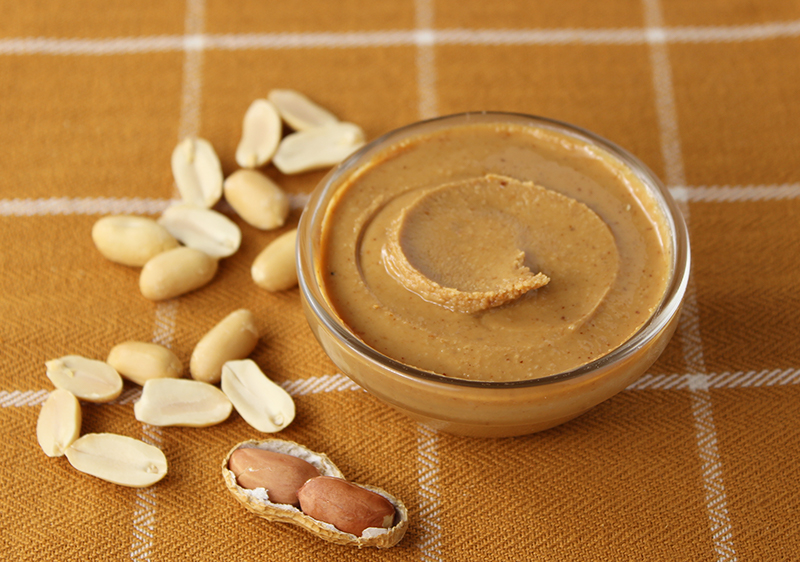
3) Other Peanut Butter Nutrition Facts
Research has shown that peanuts are sources of compounds like resveratrol, phenolic acids and flavonoids in addition to phytosterols which have been linked to reducing LDL cholesterol.
We mentioned peanut butter and its complete protein content but it is also considered a good dietary source of Co-enzyme Q10.
Peanuts also contain other nutrients such as niacin, vitamin E, manganese, magnesium, phosphorus, copper as well as other B-vitamins and trace minerals.
Peanuts are a source of mostly monounsaturated fats. Two tablespoons of creamy peanut butter, according to nutrition data is about 7.6g monounsaturated fat, 3.3g saturated fat and 4.4g polyunsaturated fat.
The 4 Cons of Peanut Butter
1) Too Much Omega-6
2) Aflatoxin and Peanut Allergies
3) High in Oxalates
4) Low-Quality Products
1) Too Much Omega-6
Yes, peanut butter does contain a notable portion of polyunsaturated fats. However, most of this is coming from omega-6 fatty acids (linoleic acids) not the healthier omega-3's (alpha-linolenic acids).
Two Tablespoons Creamy Peanut Butter
Total Polyunsaturated Fat - 4.4g
Omega-3 Fatty Acids - 24.3mg
Omega-6 fatty acids - 4413mg
If not adequately balanced with anti-inflammatory omega-3 fatty acids,
too much omega-6 can cause inflammation in the body and other related
health conditions.
Therefore, if you consume a lot of peanut butter, it is good to try to balance out ratios in diet. (*) Dietary sources of omega-3 include seafoods, leafy green vegetables, chia seeds, microalgae, seaweed and omega-3 algae, krill or fish oil supplements.
2) Aflatoxin and Peanut Allergies
Peanuts as a ground-growing legume are susceptible to a naturally occurring mold known as aflatoxin which may act as a carcinogen with frequent intake. While the commercial peanut growing industry, especially in the U.S., is highly monitored and tested to reduce the risk of exposure, you may wish to avoid peanuts if you are highly sensitive to molds.
This is why it is often a common and recommended practice to boil raw in shell peanuts before consuming them.
When it comes to peanut butter, it is important to purchase high-quality products and we always recommend organic non-GMO varieties over others.
Another major con of peanuts is that they are top on the list of food allergens that can have serious and/or life-threatening health impacts on those with peanut allergies.
3) High in Oxalates
A big disadvantage to consuming peanut butter is that peanuts are high in the "antinutrient" known as oxalates.
Oxalates can prevent the absorption of certain minerals, especially calcium, and excessive dietary intake can lead to health conditions such as kidney stones. (*)
Some research shows that boiling vegetables helps to significantly reduce oxalate content (*), this has not thus far been shown true for dry-roasting peanuts used to make peanut butter.
4) Low-Quality Products
It is likewise important to read peanut butter nutrition facts labels and ingredients as many include sugar and oil emulsifiers.
Unfortunately, most popular mainstream peanut butter brands sadly are filled with these very unhealthy substances.
The most unwanted we would have to say would be peanut butter that's processed with hydrogenated oils or other bad fats like palm oil. This is commonly done to produce a more consistent texture and prevent oil separation, typically labeled "No Stir" peanut butter.
These days it can be hard to find artisanal peanut butter suppliers. The company known as Smucker's interestingly owns almost all commercial organic and non-organic peanut butter brands produced in the U.S., such as Jif, Laura Scudder's, Smucker's, Adams and Santa Cruz.
Some American health food stores do in fact have peanut mills for grinding your own fresh organic peanut butter. This is by far some of the best we have ever tasted.
Another alternative to the standard peanut variety are wild jungle peanuts which don't require boiling or roasting.
Precautions:
Of course avoid peanut butter if you have allergies to peanuts. Seek the advice of your health care professional before consuming peanut butter on a regular basis if you are pregnant, nursing, have a serious medical condition or are taking prescribed medications.
Shop Related Products (About Affiliates & Amazon Associate Paid Links)
Affiliate Disclaimer: This section contains affiliate product links. If you make a purchase through our recommended links, we receive a small commission at no additional cost to you. Thanks for the support.
